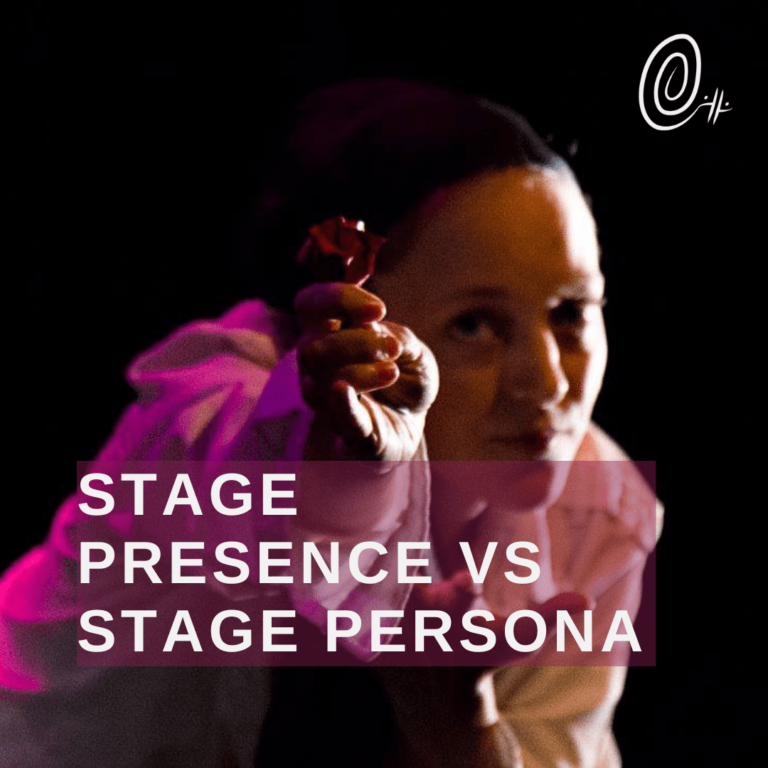Finding Your Artistic Voice
When you enter the world of being a professional artist, you need to have something that makes you stand out from the crowd. Even if art remains a hobby, having a distinct artistic voice is something that people talk about a lot. But what is it? How do you get it or find it? How do you translate it into an artist statement? And is it really that important?
After over ten years of working professional in the performing arts field, I would like to think that I’ve developed a strong artistic voice. That’s been confirmed from outsiders as well, who have remarked on what they call a ‘signature style.’ It’s taken many years and much experimentation, a lot of it unconscious, and I’m sure it’s still evolving. It’s definitely a slippery concept, but I’ll do my best to pin it down and smack words onto it.
Let’s go question by question.
What actually is an artistic voice?
An artistic voice is essentially your unique style as an artist. It’s a mix of your training, your interests, your experience, and your inspirations. You can think of it like your signature – a mark that identifies you in some way. If you’re having trouble picturing this, think of an artist that stood out from everyone else. In my undergraduate at Columbia, I wrote my thesis on Michael Jackson’s movement signatures. What made him stand out was a blend of stage presence, the specific moves he used and borrowed, and how he was able to enact them. However, his artistic voice would include the whole package of costumes, music and singing style.
You can do this with other artists. Each one brings their own opinion or perspective to the work of being an artist, whether they are a performing artist or painter.
How do you get or find your own artistic voice?
Your artistic voice is not something that you can develop overnight. In fact, it will continue to grow, mature, and evolve with you. It’s not a short term project, and I believe it is a blend of both conscious and unconscious work. However, there are few tips I can share.
The first thing is to just pay attention. There might be certain patterns or a certain style you often work in. Or certain artists or other sources of inspiration that directly influence your work. For example, from when I started choreographing I favored a more minimal approach, which my teachers in university found a bit baffling. But I liked it better, and so I intentionally developed it, though I’ve had to figure out how to mix in some nice dance technique with twirls and kicks here and there to keep people interested. A lot of people in Pakistan where I lived have called my work mime rather than dance for this reason, though I think technically it’s more dance theater.
It could be also in the topics you like to work in. In academic speak they call it (or used to, before it became something else) the problematic of your approach. As an example: Someone told me once they thought my work isn’t very happy or even a little dark. From the inside I don’t think of it that way but it’s true that I don’t really make ‘fluff,’ or dance which is mostly made to be pretty. (Not that there’s anything wrong with that!). I choose stories that involve some sort of conflict, and often have to do with questions of identity or gender. I’ve leaned more and more into that with my artistic alter egos.
This process of paying attention to your existing interests and body of work and then curating it as you go can give you a good idea of what your artistic voice is.
One important note is that, in my opinion, you can’t really manufacture it. It has to come from inside and what’s already there. Of course you can add to it and bring it new skills along the way – I never used to think I could move fast or sharp until I learned how. But it’s like you just decide, I will be this kind of artist, and then it happens. It has to be natural, like pruning a plant rather than growing a whole different one.
How do you translate this into an artist statement?
Before we answer this, I just want to note that an artist statement can apply to many different things. It might be for a specific work or performance. If you go to an exhibition, there might be an artist statement which is just for that exhibition, or the choreographer’s note in a program about a dance performance. Furthermore, an artist statement is very much your intention, it is what you are trying to do. However, it often speaks to your artistic voice, or puts into words what you think your voice is at that point in time.
My best advice is to just try. Start with the genres you work in, the main topics you work in, and some of the themes that you think are present in your work. For example, I might say that I am a performer and storyteller and focus on telling evocative stories through a variety of mediums, most often through the performing arts. My movement style is a blend of classical ballet and contemporary dance technique with a great deal of mime and dance theater thrown in. I work generally as a solo performer and often explore themes of identity and gender.
Of course, I often change up how I talk about my work, and it helps me understand what I’m trying to do and what’s important to me at the time. So, I suggest returning to your artist statement regularly and editing it accordingly. In some ways, it’s a two-way street – in adjusting your artist statement, you understand your artistic voice better, but in becoming aware of your artistic voice, you can more easily write an artist statement!
Is it really that important?
In my opinion, yes, it really is that important, particularly if you are going professional. This counts for all kinds of artists, from performing arts to visual arts. It’s particularly true if you are heading into the artsy fartsy side of the artist world. I’m talking galleries, classical theaters, this kind of thing. However, even if you are a more commercial artist (again, no judgment here), I think it’s important. Why? Because it helps you find your unique selling point. It’s really good to know what makes you unique, which also helps you understand who your audience is and who you are trying to reach.
Didn’t think it was about marketing, did you?? It is, and it isn’t. Finding your artistic voice is something that is useful internally and externally. For you, it helps you see what you are trying to do and what direction you want to go. For the world, it helps understand why your art is worth a look in the sea of content we are all drowning in. So yes, I absolutely encourage everyone to take the time every now and then to step back and look at their artistic practice and think, what is the thing that makes all of this me, or my style? And that’s the beginning of the journey!







